ROUTE 1: THE ARCHBISHOP’S CHATEAU AND THE GARDENS
Route Length: 1.5 kmDuration: approx. 30 min (does not include guided tours of individual locations)
Kroměříž is a town of rich history and sights. The combination of picturesque corners, charming alleys and arcades creates a unique atmosphere and invites both tourists and locals to stroll and explore its historic centre. It fully deserves the nickname “Athens of Haná” related to the cultural importance of the town and to the large number of schools, which have always formed an important part of this town’s legacy.
The most famous and most visited tourist destinations in Kroměříž are the Archbishop’s Chateau, the Chateau Garden, and the Flower Garden – this entire complex has been on the UNESCO World Heritage List since 1998.
The Archbishop’s Chateau and Gardens walking route is almost identical to the official UNESCO route created in 2014. It is marked by brass arrows in the shape of the town logo placed directly into the pavement. These arrows point towards the Flower Garden and lead you along the most important monuments of the historic town, which has been a bastion of Church power since its foundation.
Scan the QR code to get information about this route.
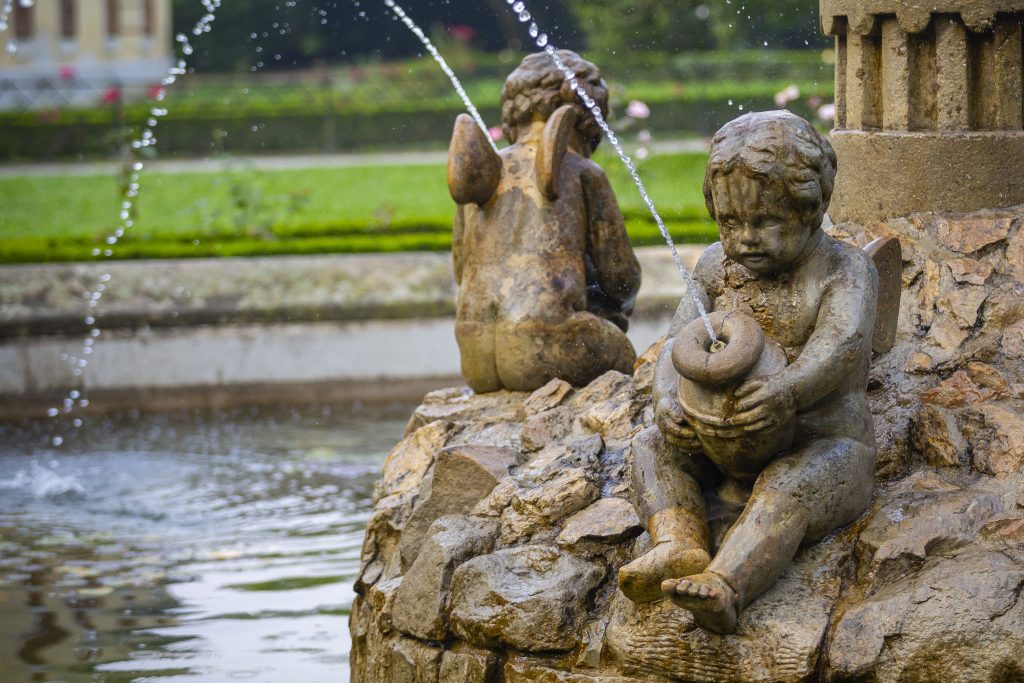
LANDMARK:
A – The Chateau Garden
The Chateau Garden was originally intended for the cultivation of fruit, vegetables, and flowers. In the 17th century, it was gradually transformed into a Baroque garden and became a natural extension of the Archbishop’s Chateau, with which it is connected by the Sala Terrena. In the 19th century, the garden became an English landscape park with an area of 64 hectares. With a network of water channels with brooklets and ponds, Romantic elements (such as the Pompeii Colonnade, the Peacock Court, the Fishermen’s Pavilion, or the Colloredo’s Colonnade) set in sweeps of gently rolling lawns and meadows, with statues (Archbishop Rudolf Jan’s bust, Archbishop Sommerau-Beckh’s bust) and a small zoo, the Chateau Garden ranks among the finest in Europe. The Garden is a popular place to go in search of peace, relaxation, or even knowledge.
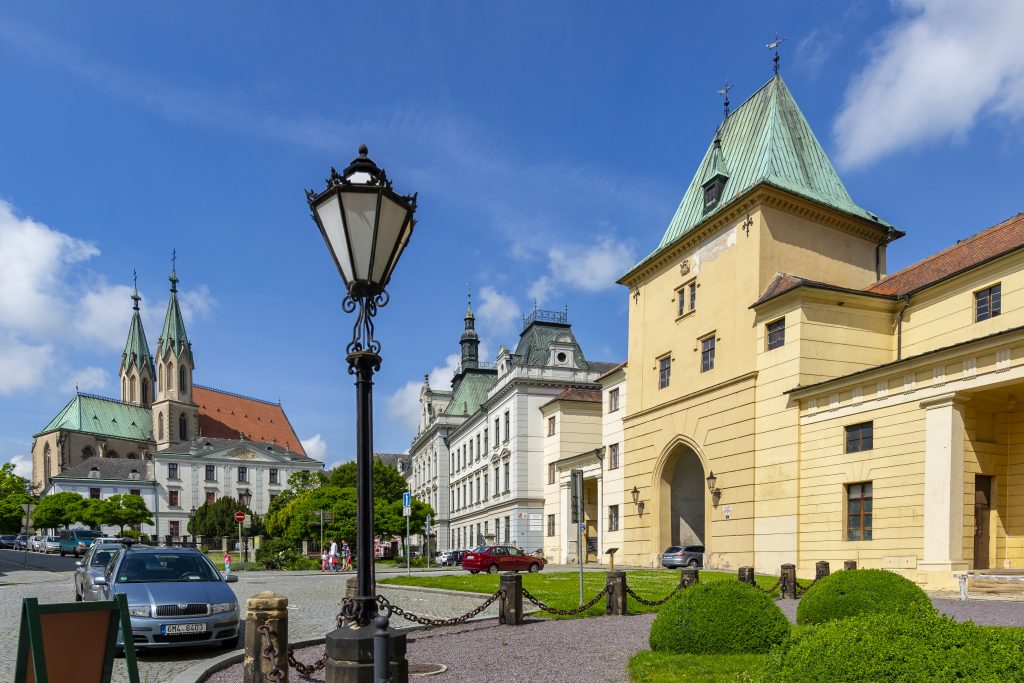
PLACE OF INTEREST:
1 – The Mill Gate
The Mill Gate was a part of the town fortification. The Gate acquired its present-day form in the second half of the 19th century, partly according to the plans of the architect Anton Arche. It is the last surviving Gate in the town. The other two, the Water Gate and the Blacksmith’s Gate, were torn down between 1855 and 1857. The Mill Gate led to other important houses and buildings outside the town walls, especially to the Mint, the mill, and the brewery.
LANDMARK:
B – Archbishop’s Chateau
Together with the Gardens, the Archbishop’s Chateau is one of the most noted and most visited tourist destination in Kroměříž. Its origins and purpose are linked to bishops and archbishops of Olomouc, for whom the Chateau became a summer residence. The interiors of the Chateau are richly decorated, and many rooms are equipped with a lot of authentic equipment and furniture. Some of the most valuable halls are the Throne Hall, the Assembly Hall, the Liege Hall, the Hunting Hall, Tsar’s Room, the Chateau Library, and the Chateau Gallery – where you can view the works of important European painters from the 15th to the 18th centuries (such as Titian, Lucas Cranach the Elder, Hans von Aachen, Paolo Veronese, or Jan Brueghel the Elder). In 1848, the Constitutive Imperial Congress – a meeting between the Austrian and the Russian emperors – was held in the Assembly Hall. Until today, the most important events, concerts and ceremonies take place in this unique space. The Chateau Tower with 206 steps and a breath‑taking view of the surrounding area at its top is also worth a visit. Not only the Chateau, but also the Gardens and the entire town, have been vastly used by filmmakers. Many Czech (or Czechoslovak) as well as foreign movies and series were filmed here, such as Forman’s Amadeus (1984) or the series Maria Theresia (2017).
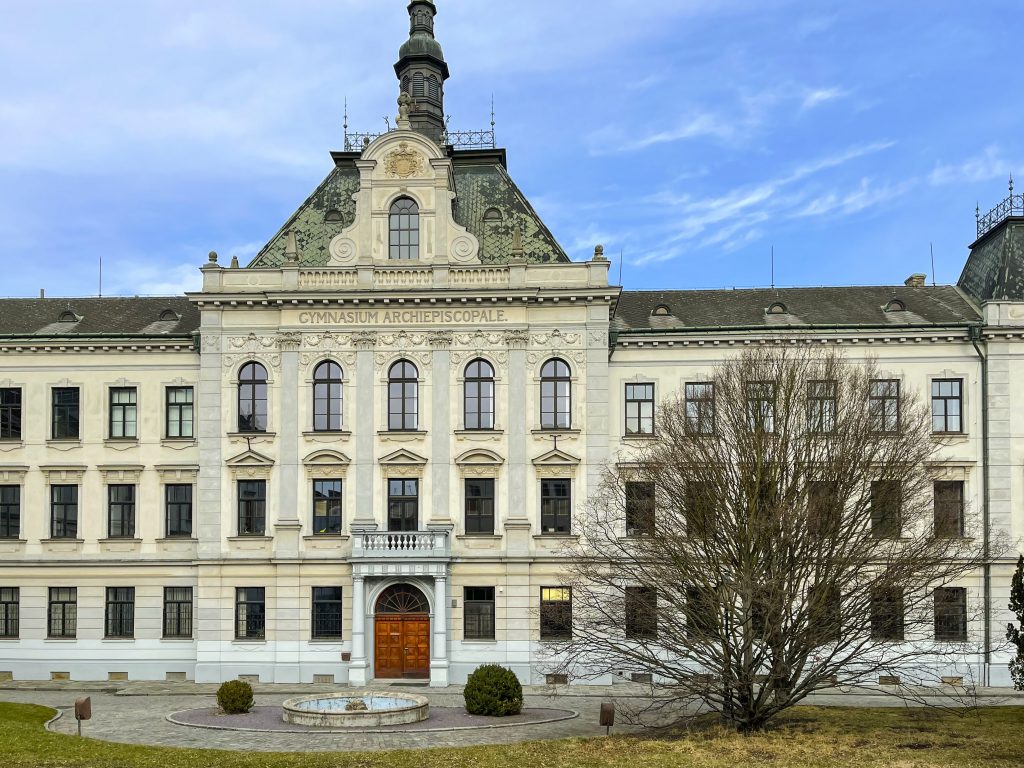
PLACE OF INTEREST:
2 – Archbishop Gymnasium
The Archbishop Gymnasium (type of secondary school), located in Sněmovní náměstí, was originally an all-boys seminary established between 1856 and 1860 by Josef Erwin von Lippert. The chapel on the premises dates from 1959. Between 1910 and 1914, the seminary was growing. Classes are still held in the building today.
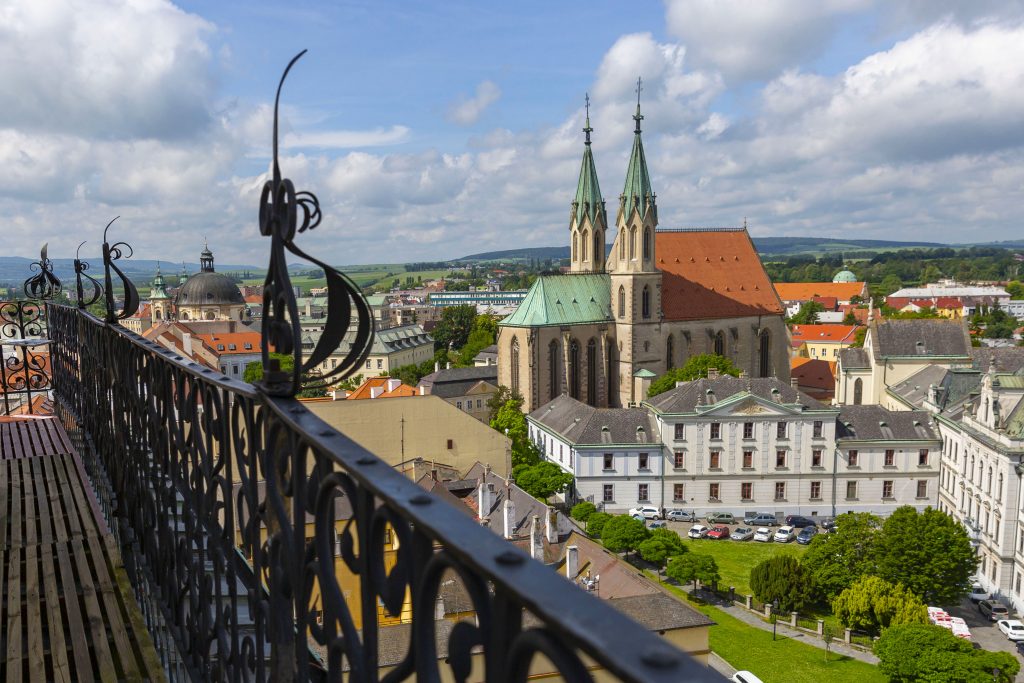
PLACE OF INTEREST:
3 – Church of St. Maurice
Today’s Church of St. Maurice (located in square Stojanovo náměstí) was built on the site of the original Gothic building from the 13th century. It was founded by bishop Bruno von Schauenburg (1245–1281), shortly after it became a collegiate church in 1262. The original Gothic church was plundered and destroyed during the Hussite Wars. Since then, the building has been destroyed, repaired, and rebuilt several times.
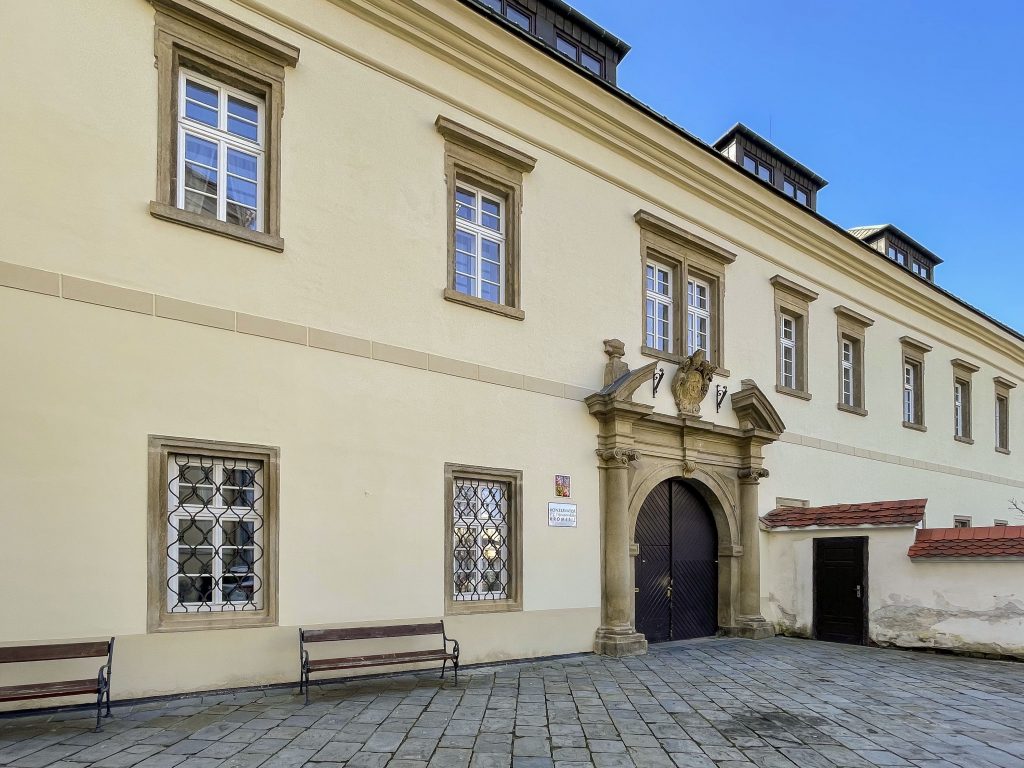
PLACE OF INTEREST:
4 – P. J. Vejvanovský Conservatory
The P. J. Vejvanovský Conservatory is located in Pilařova street in the building of the former Piarist college, which was built in the years 1688–1694 on the site of the original infirmary for poor behind the Church of St. John the Baptist.

PLACE OF INTEREST:
5 – Church of St. John the Baptist.
The Church of St. John the Baptist was built between 1737 and 1768 as a part of the Piarist College. It was consecrated in 1768. Its central part above the oval shaped nave is vaulted at a height of 35 metres. The rich fresco decoration by J. J. Etgens celebrates St. John the Baptist, the patron of the temple.
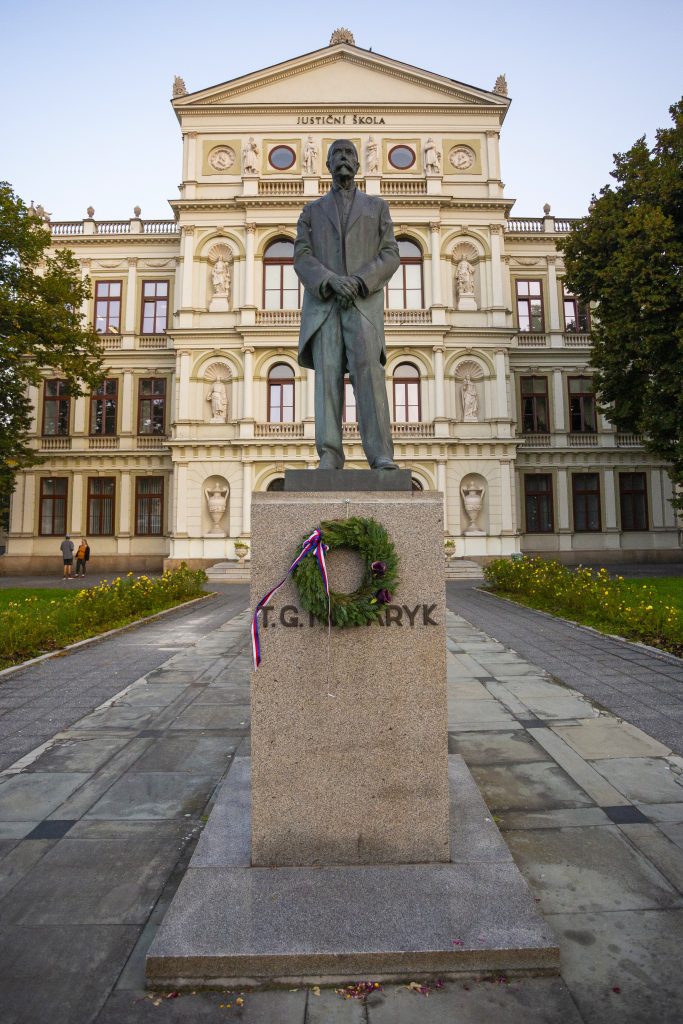
PLACE OF INTEREST:
6 – Judicial Academy
The Judicial Academy (located in square Masarykovo náměstí) is housed in a magnificent building from the second half of the 19th century, which was originally a Realschule (type of a German secondary school). The building is valued not only for its architecture, but also for its interior decoration. In front of the Academy stands the statue of T. G. Masaryk (the first Czechoslovak president).
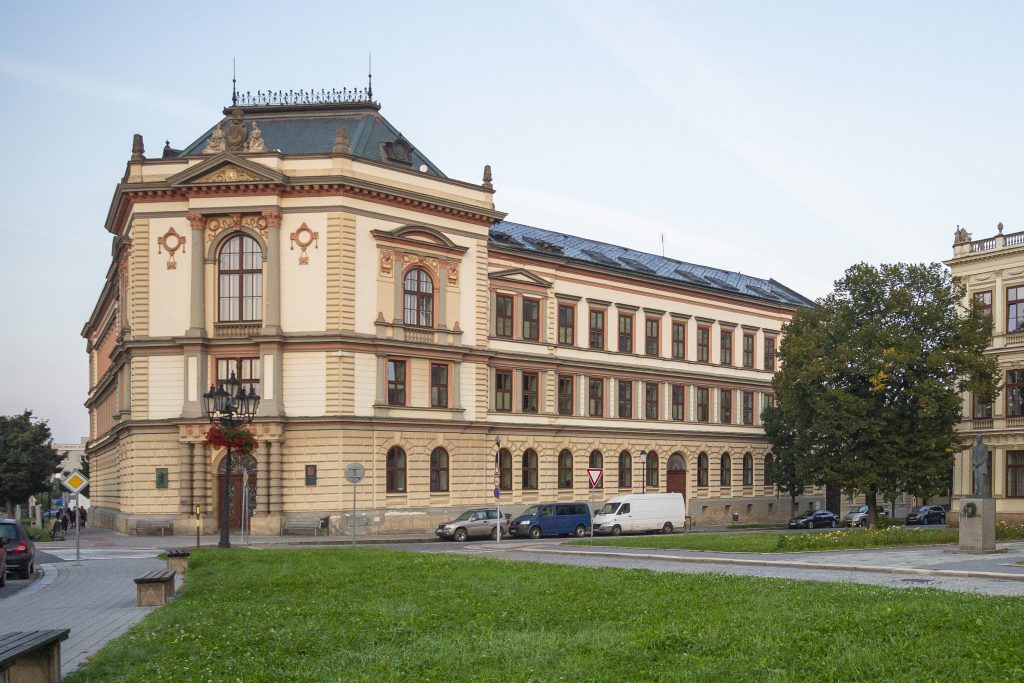
PLACE OF INTEREST:
7 – Gymnasium
The building of the Czech State Real Gymnasium (type of secondary school) was built at the end of the 19th century on the site of the military hospital from the 17th century.
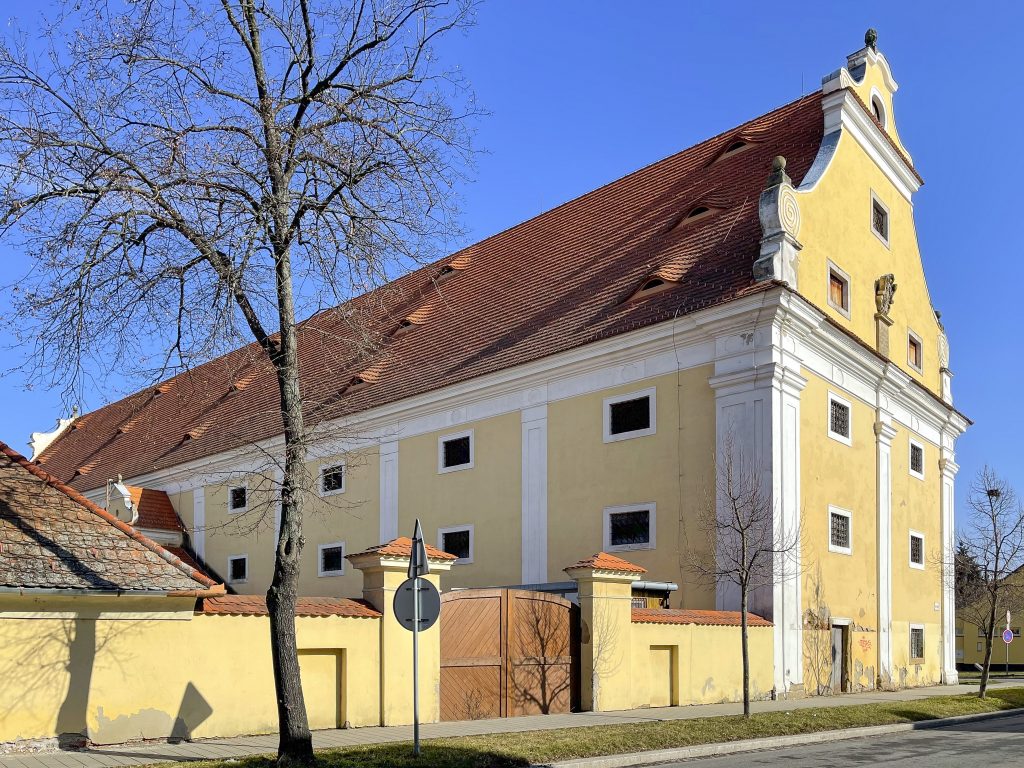
PLACE OF INTEREST:
8 – Manor Granary
The manor granary was built in 1724, when bishop cardinal Wolfgang Hannibal from Schrattenbach came to power. The coat of arms and the inscription plate on the building are also dedicated to him. The façade of the Granary is divided by pilasters and by several window axes.
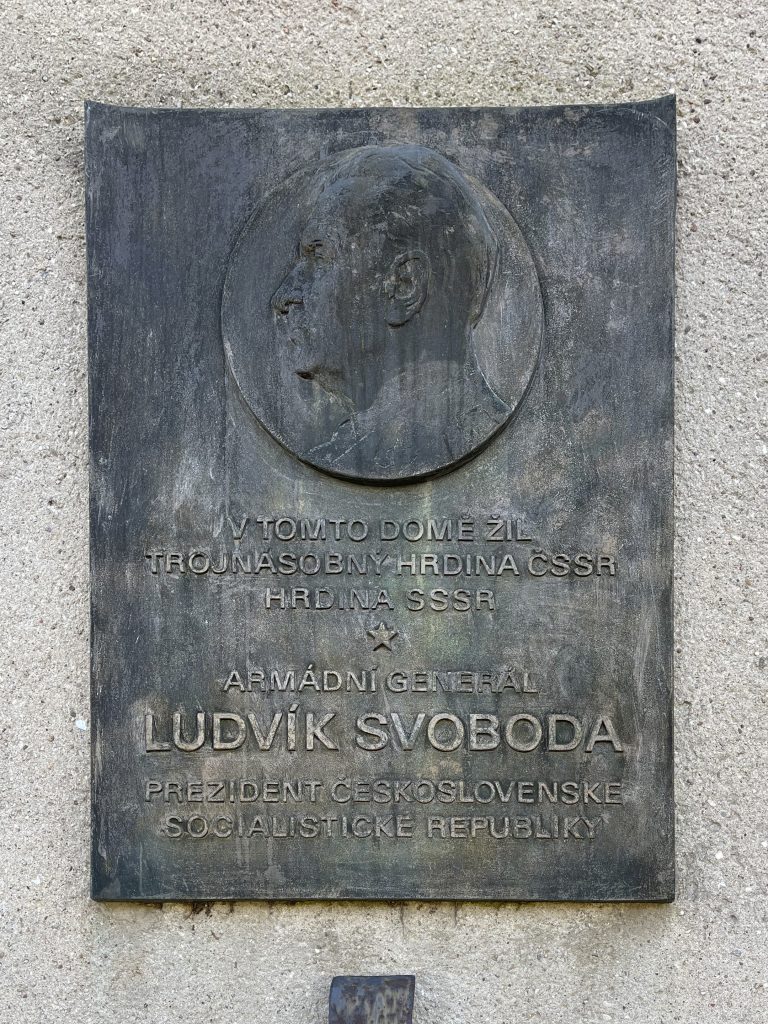
PLACE OF INTEREST:
9 – House No. 1234/35
Ludvík Svoboda, the former Czechoslovak president (1968‑1975), Minister of National Defence (1945‑1950), legionnaire and army general, lived in this house with his family between 1934 and 1939.
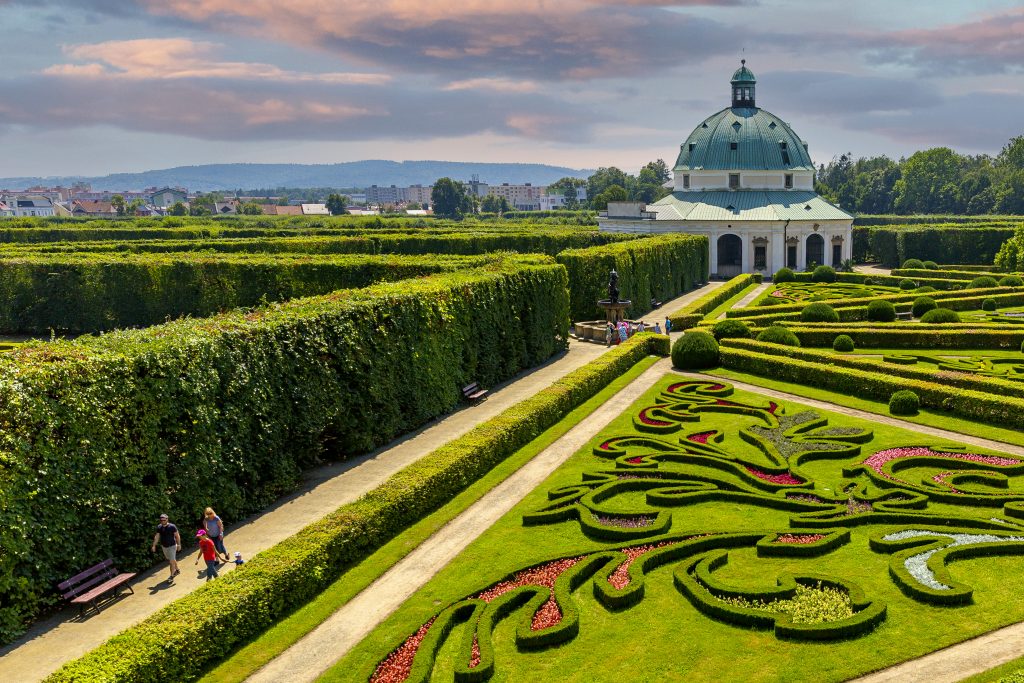
LANDMARK:
C – Flower Garden
The Flower Garden represents a masterpiece of European garden art of the 17th century. At the initiative of bishop Karl II von Liechtenstein‑Kastelkorn, a stylish landscape park with an area of 16 hectares was built by Italian architects between 1665 and 1675 behind the town walls for everyone’s enjoyment. The garden still offers a unique and once-in-a-lifetime experience with its hedge mazes, a 244‑metres long colonnade, tropical and subtropical greenhouses, a Rotunda with the Foucault’s pendulum, and its floral and sculptural decoration. The Fountain of the Lions or the Tritons’ Fountain are also two sights worth a visit.


